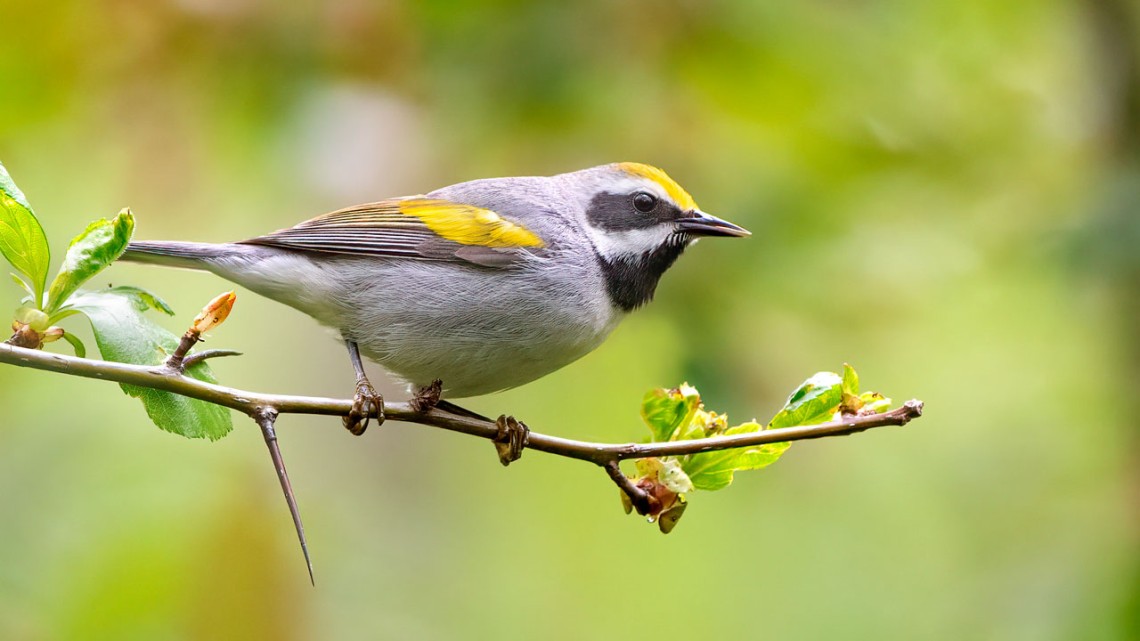
Golden-winged Warbler
Birds report finds losses in all habitats, except wetlands
By Krishna Ramanujan, Cornell Chronicle
Birds are declining overall in every habitat, except wetlands – a finding that could provide a viable strategy for improving outcomes for all birds, according to the 2022 State of the Birds Report for the United States.
The report, released Oct. 12, reveals that bird populations in forests, grasslands, deserts and oceans are struggling, while wetland-dependent species have increased significantly over the last 50 years due to consistent investments from hunters, landowners, state and federal agencies and corporations to protect their habitats.
Proactive bird conservation before a species requires Endangered Species Act protection is the fastest, most effective way to bring birds back while also helping people, local economies and communities, according to the report.
“The rapid declines in birds signal the intensifying stresses that wildlife and people alike are experiencing around the world because of habitat loss, environmental degradation and extreme climate events,” said Amanda Rodewald, director of the Cornell Lab of Ornithology’s Center for Avian Population Studies and a co-chair of the State of the Birds science committee. “Taking action to bring birds back delivers a cascade of benefits that improve climate resilience and quality of life for people.”
For example, restoring forests sequesters carbon, reduces fire intensity and creates habitat for plants and animals, Rodewald said. Greening cities provides heat relief, increases access to recreation and creates refuge for migrating birds, she added.
The report was published by the North American Bird Conservation Initiative, a forum of 33 leading government agencies and science and conservation organizations, including the Cornell Lab of Ornithology. Five sources of data were used to compile the assessment of birds, including the North American Breeding Bird Survey and the Christmas Bird Count, to track the health of breeding birds in habitats across the United States from 1970 to 2019.
Key findings include:
- More than half of U.S. bird species are in decline, which was first reported in a 2019 Science magazine study led by Cornell Lab of Ornithology conservation scientist Ken Rosenberg.
- U.S. grassland birds are among the fastest declining, with a 34% loss since 1970.
- Waterbirds and ducks in the U.S. have increased by 18% and 34% respectively during the same period.
- Seventy newly identified “tipping point” species – which are at greatest conservation need – have each lost 50% or more of their populations in the past 50 years, and are on a track to lose another half in the next 50 years if nothing changes. They include birder favorites such as rufous hummingbirds, songsters such as golden-winged warblers, and oceanic travelers such as black-footed albatrosses.
The report notes that tipping point species, which have collectively lost 67% of their numbers since 1970, are high priorities for science and conservation as they are highly vulnerable to extinction, could soon face endangered or threatened status, and are in urgent need of attention.
Data shows that conservation must also ramp up to reverse the biggest declines among shorebirds, down by 33% since 1970, and grasslands birds, down by 34%. A Central Grasslands Roadmap to conserve grasslands – one of North America’s largest and most vital ecosystems that includes hundreds of millions of acres – seeks to address the need to work at bigger, faster scales by coordinating collaborations among 200 organizations from across seven sectors in Mexico, Canada, the U.S. and Indigenous nations.
The status of wetland-dependent species offers a silver lining in the report and a possible formula for helping birds and natural resources rebound.
“We want to use that precedent to work with our partners to restore bird populations, conserve habitat and build a foundation for how we respond to the loss of other bird groups,” said Martha Williams, director of the U.S. Fish and Wildlife Service.
Successful wetland initiatives such as the North American Waterfowl Management Plan, Federal Duck Stamp Program, grants from the North American Wetlands Conservation Act, and regional Joint Ventures partnerships provide frameworks that could be adapted to help conservation of other habitats.
Media Contact
Get Cornell news delivered right to your inbox.
Subscribe
